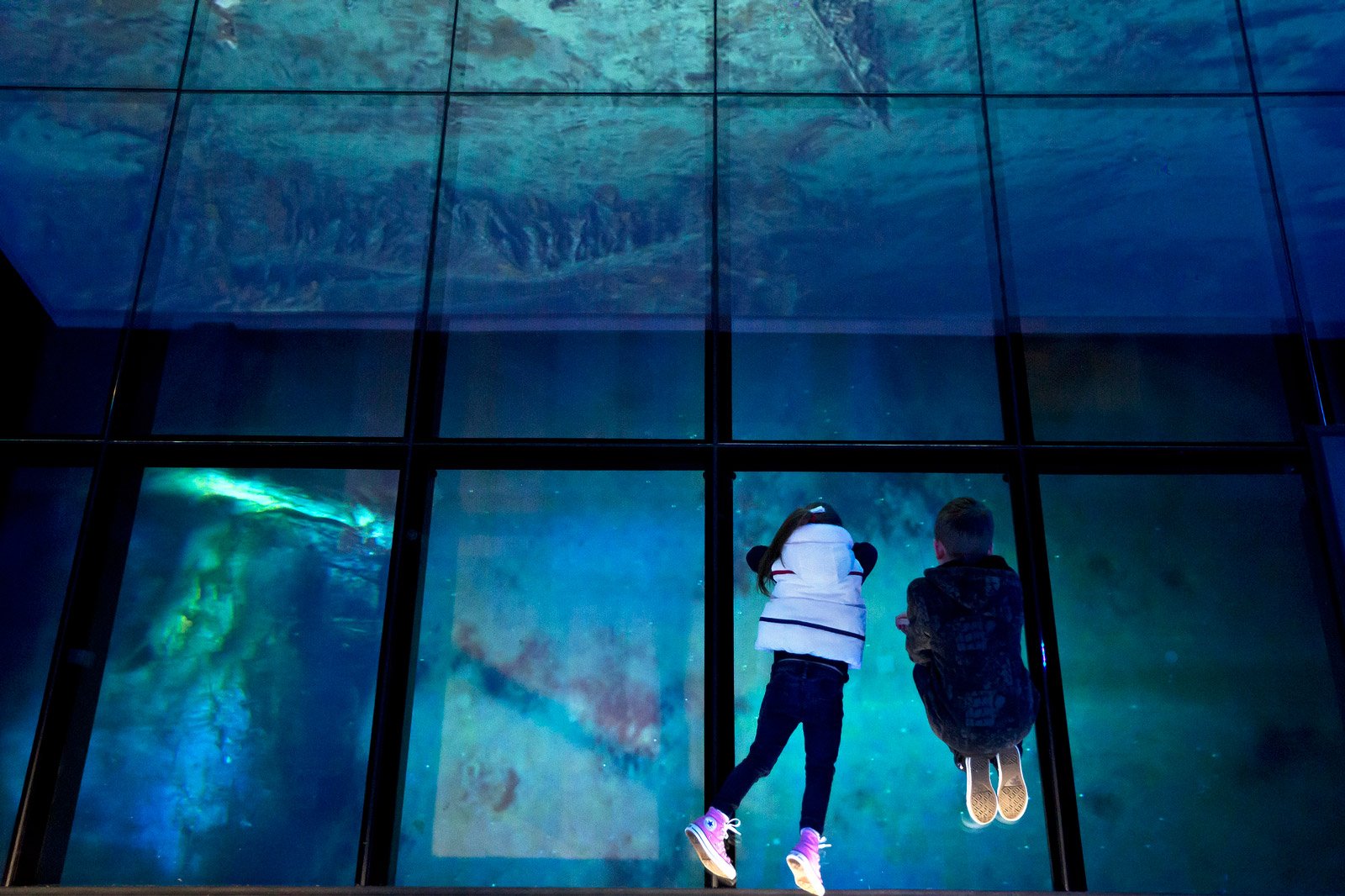
Titanic Belfast
Permanent visitor attraction
Concept design 2008/9
(while at Event Communications)
The first project I worked on when I joined the Event team in 2008. The immediate task, with some major presentation deadlines approaching, was to fast-track a design concept against the interpretation work.
The architectural scheme had been recently developed and there was an urgent need for envisaging how a linear narrative might map to quite a challenging building. I started by mapping the visitor journey so that key views out would coincide with appropriate points in the story. For example: views east towards the Drawing Offices building for the design stage; views north down the length of the slipways for the launch; and views west towards New York, the Titanic’s intended destination for her maiden voyage. Also at this early stage were ideas for balancing a core design language with variations of material and colour palettes.

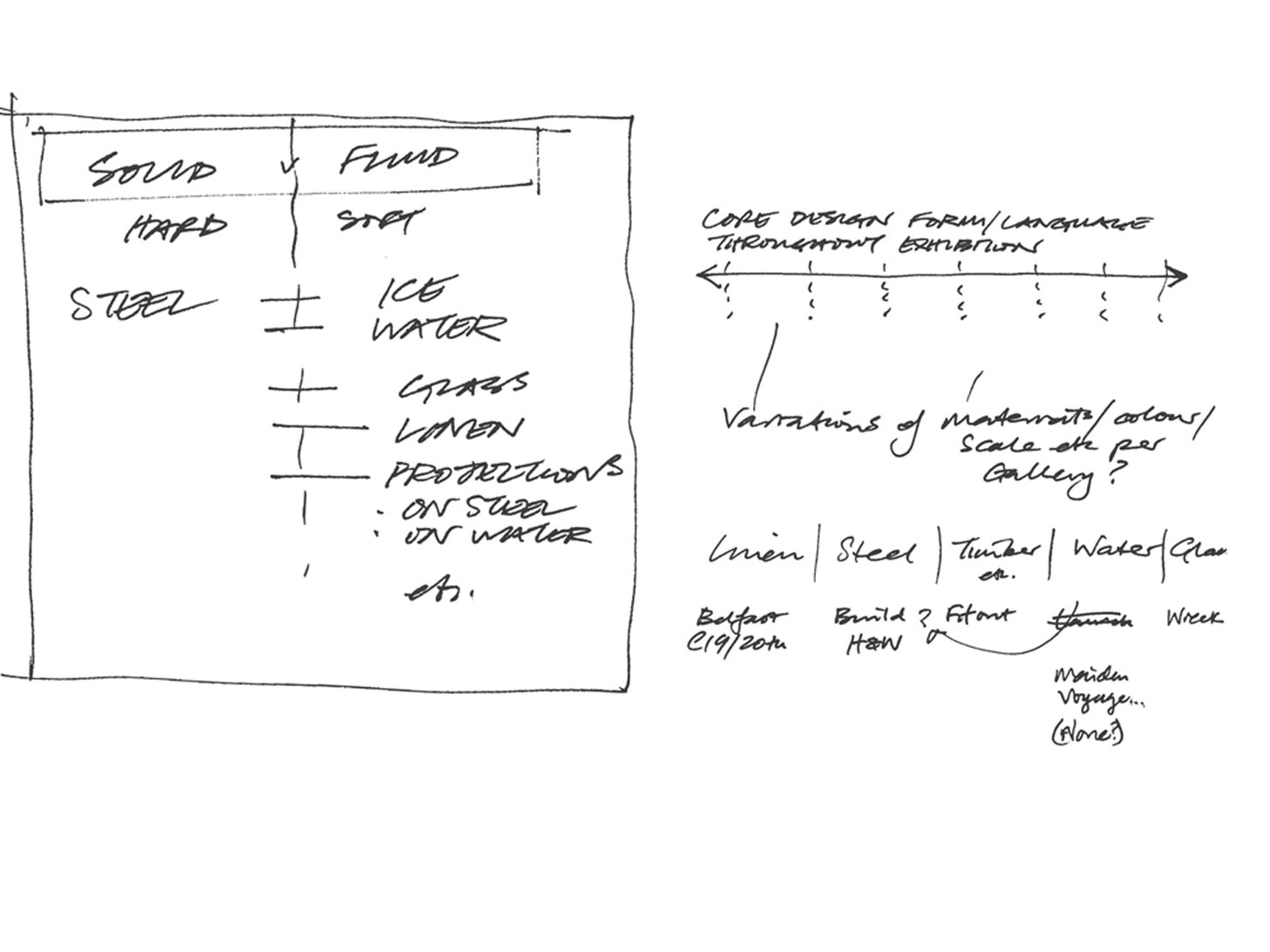
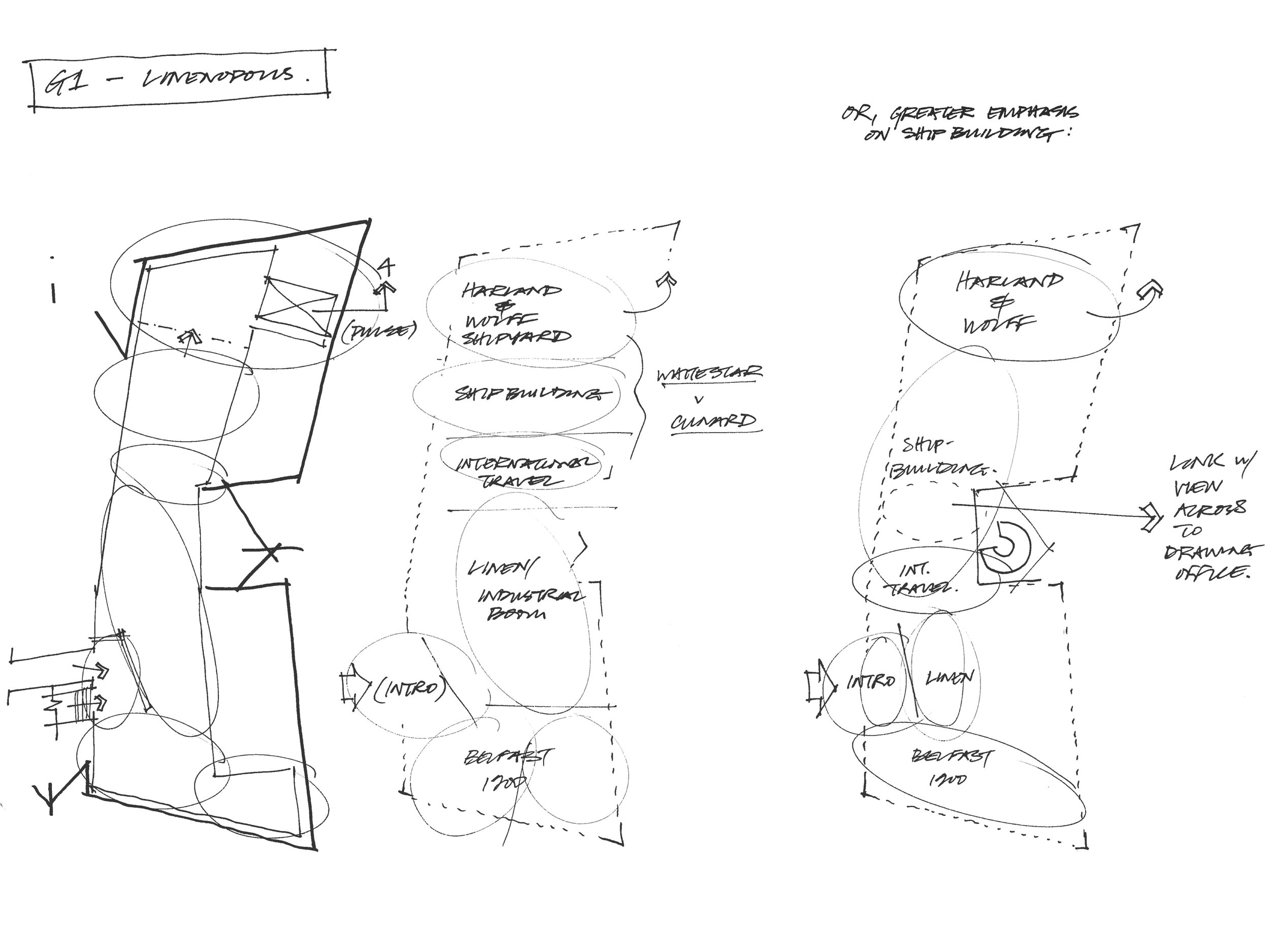
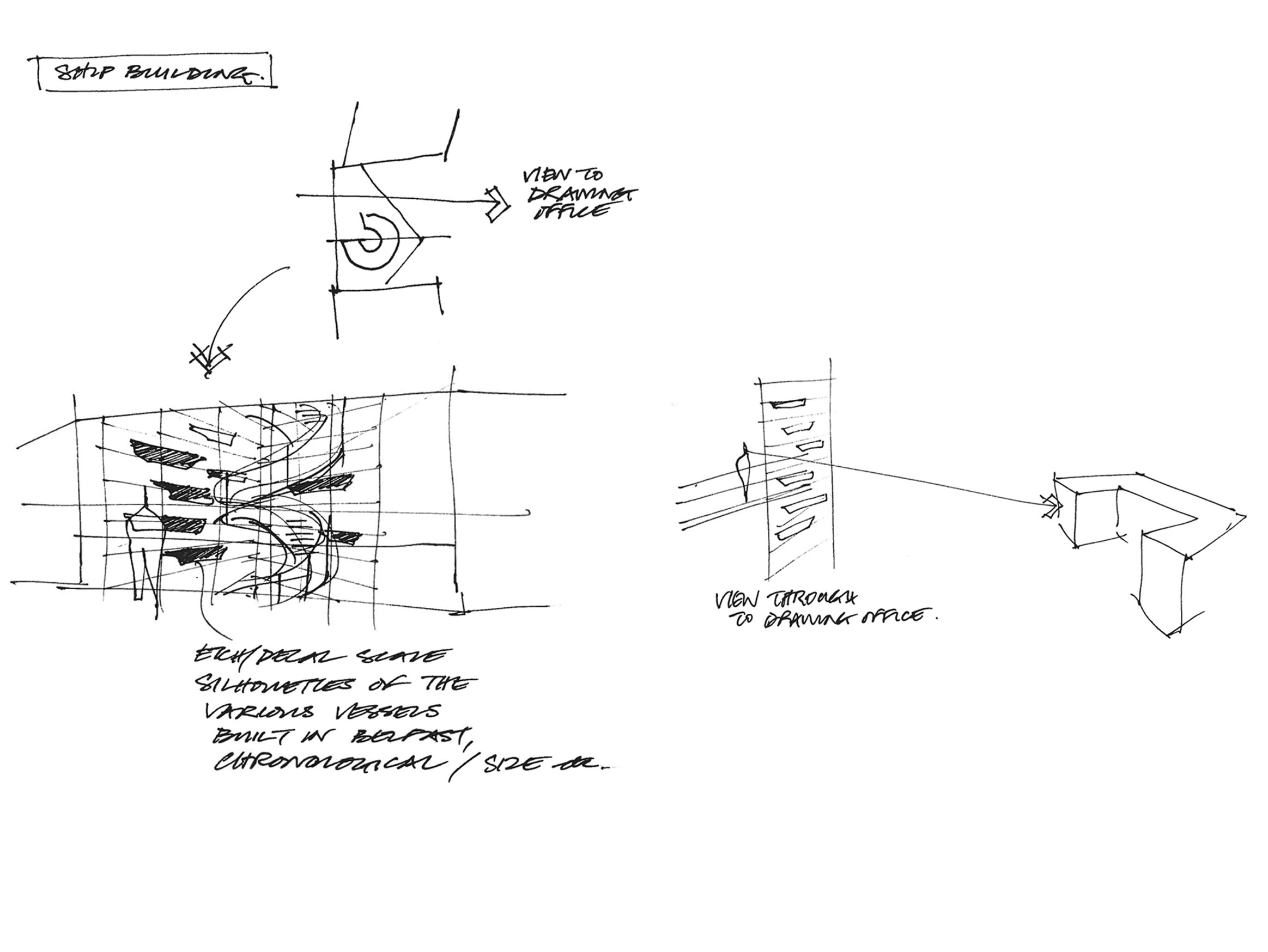
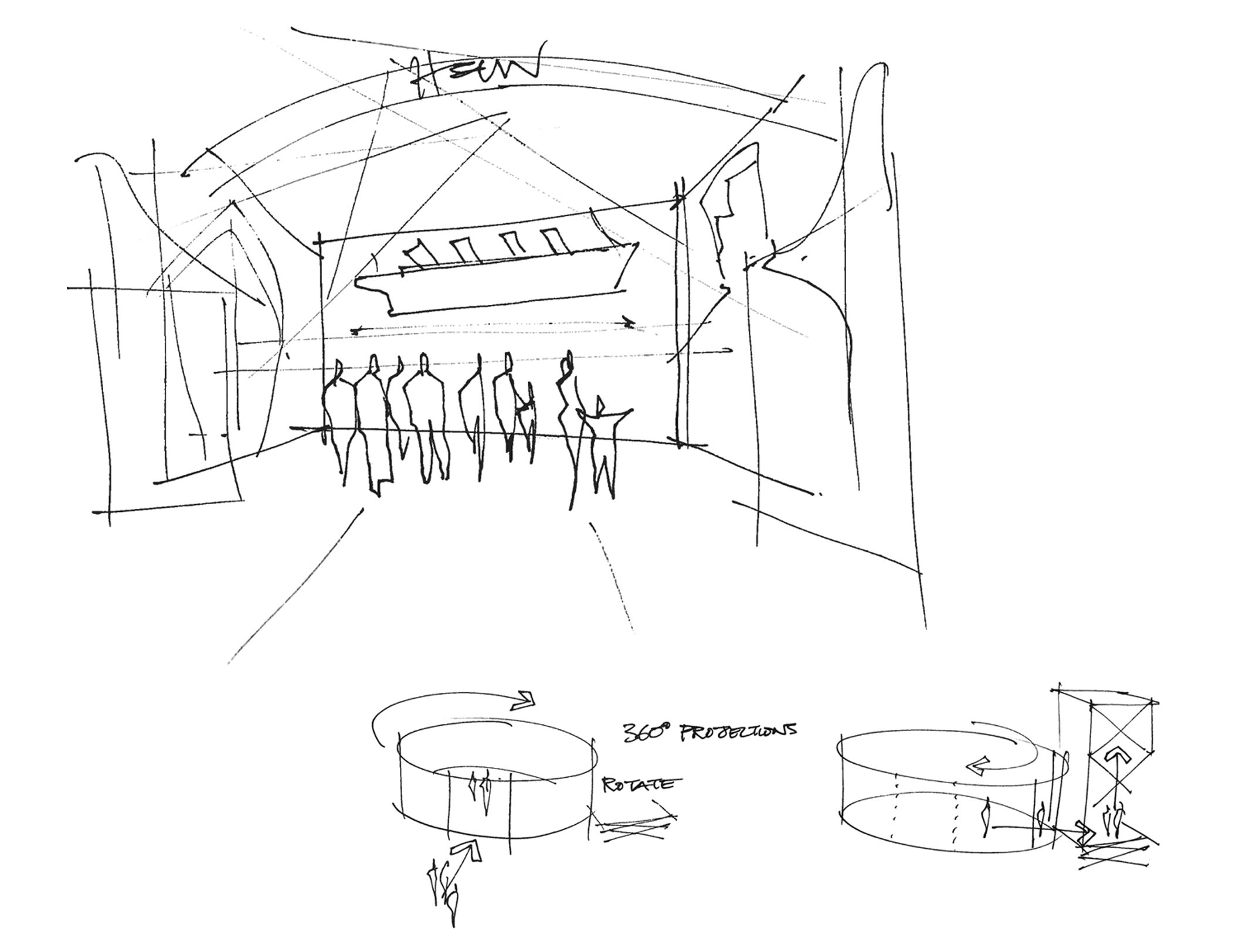
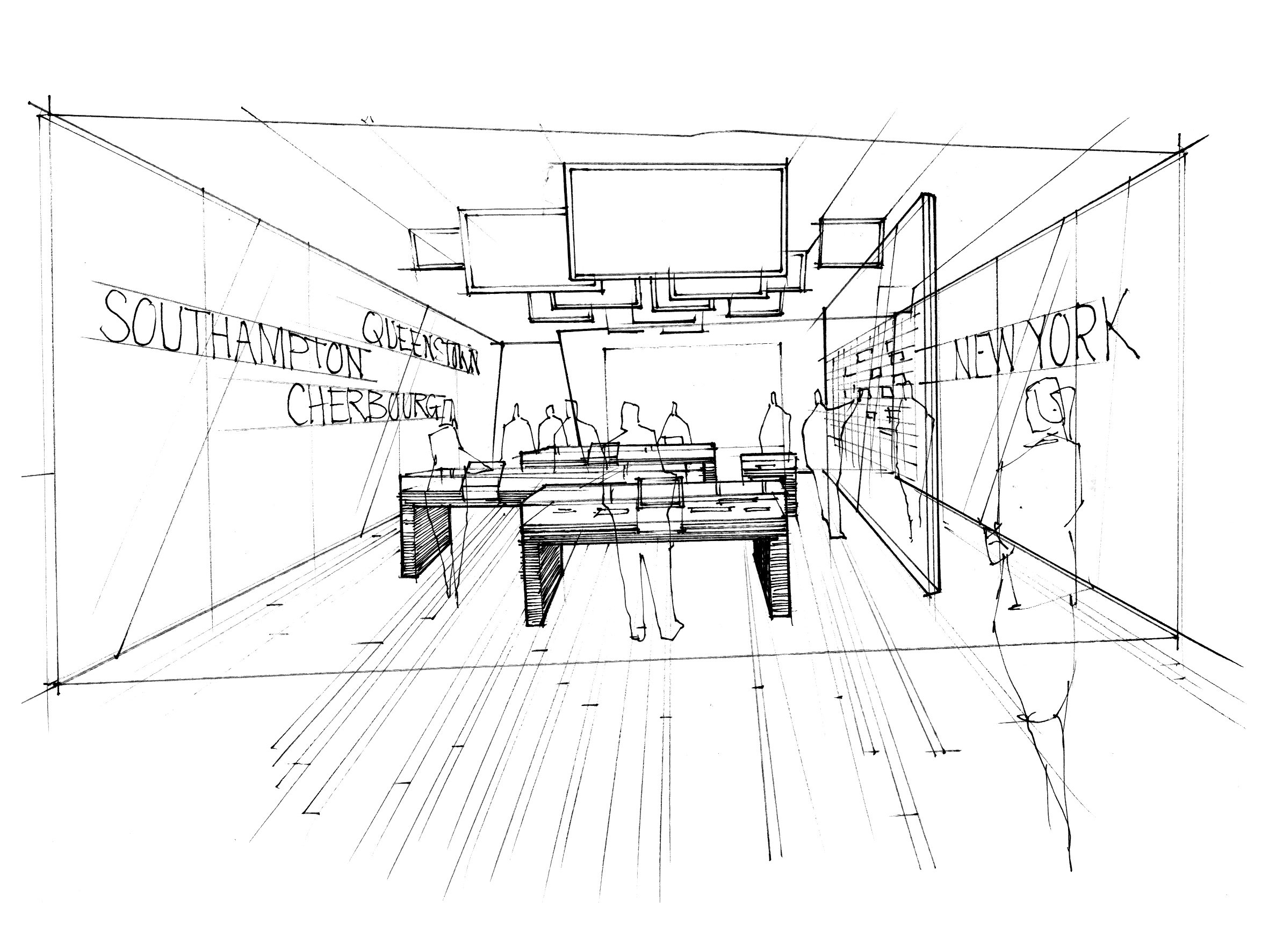
Setting some experience principles
Although spending a relatively short time on the project at Concept Stage, I suggested several principles to be explored further as the project developed. One was to aim for ‘a 1:1 scale experience’; the scale and luxury of the Titanic was a significant differentiator at the time, so why would we recreate anything on a small scale? The intended ride in Gallery 2, which had initially been proposed as a ride over a large-scale model, was subsequently reimagined.
Another suggested principle was the reduction of a generic ‘museum voice’ in favour of the narration of the story through the voices of those who were directly involved with the ship, from the Belfast builders to the discovery of the wreck by Robert Ballard. Both of these principles were intended to amplify a sense of authenticity – designed, built, and launched right where you are standing – while rooting the experience in ‘a Belfast perspective’, which was a key interpretive driver.
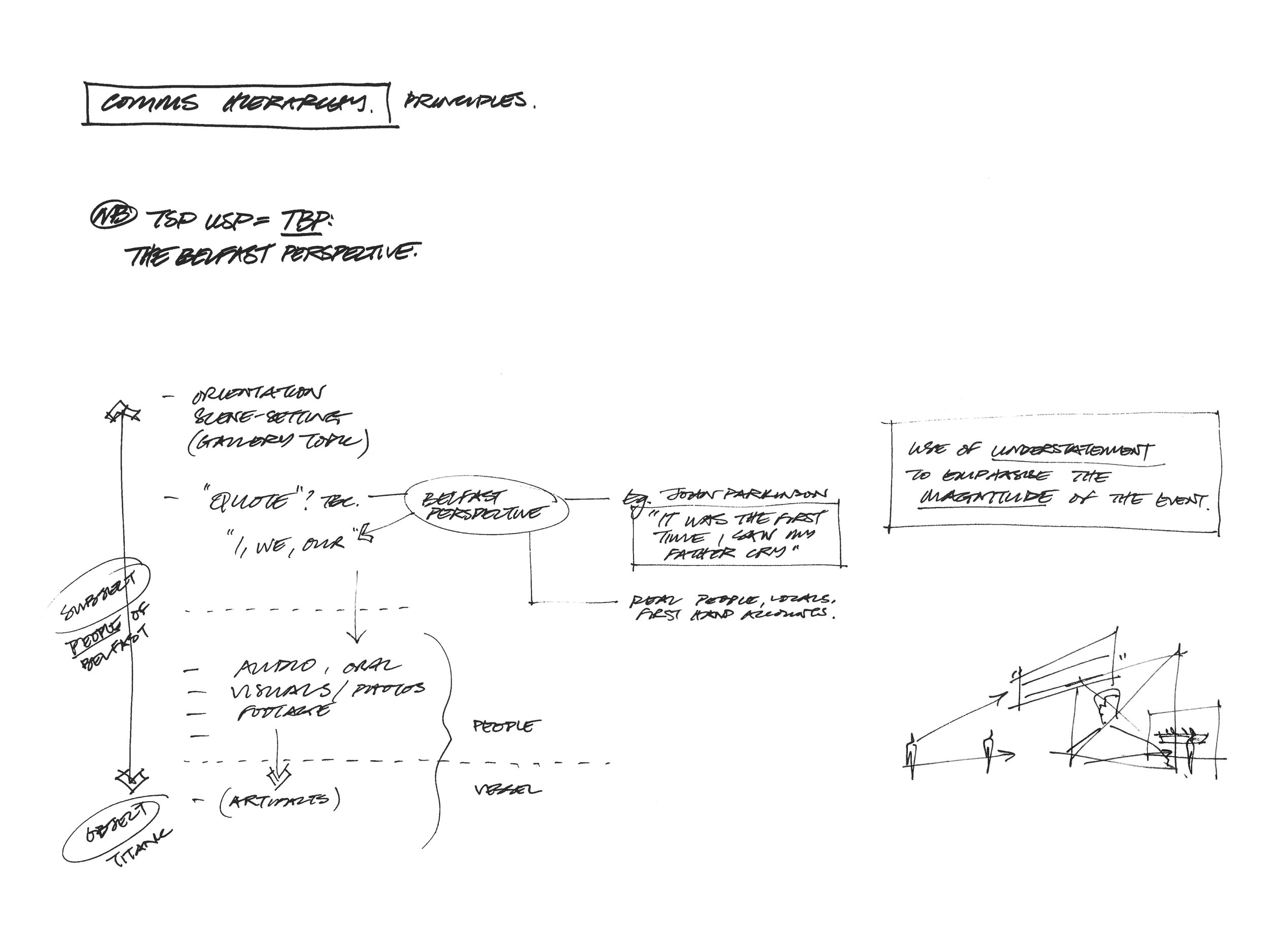
How 'The Belfast Perspective' might be realised
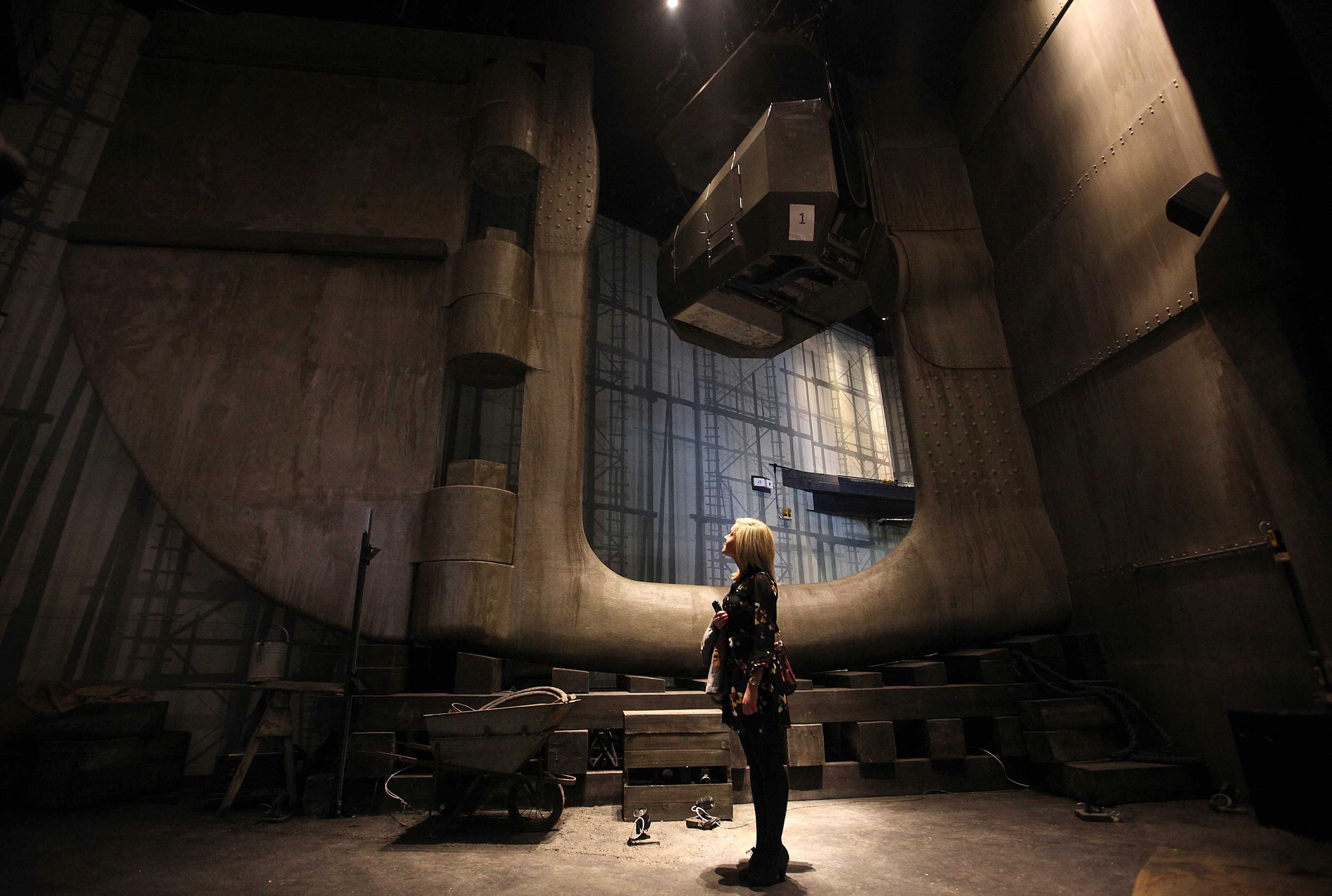
Image credit: Event
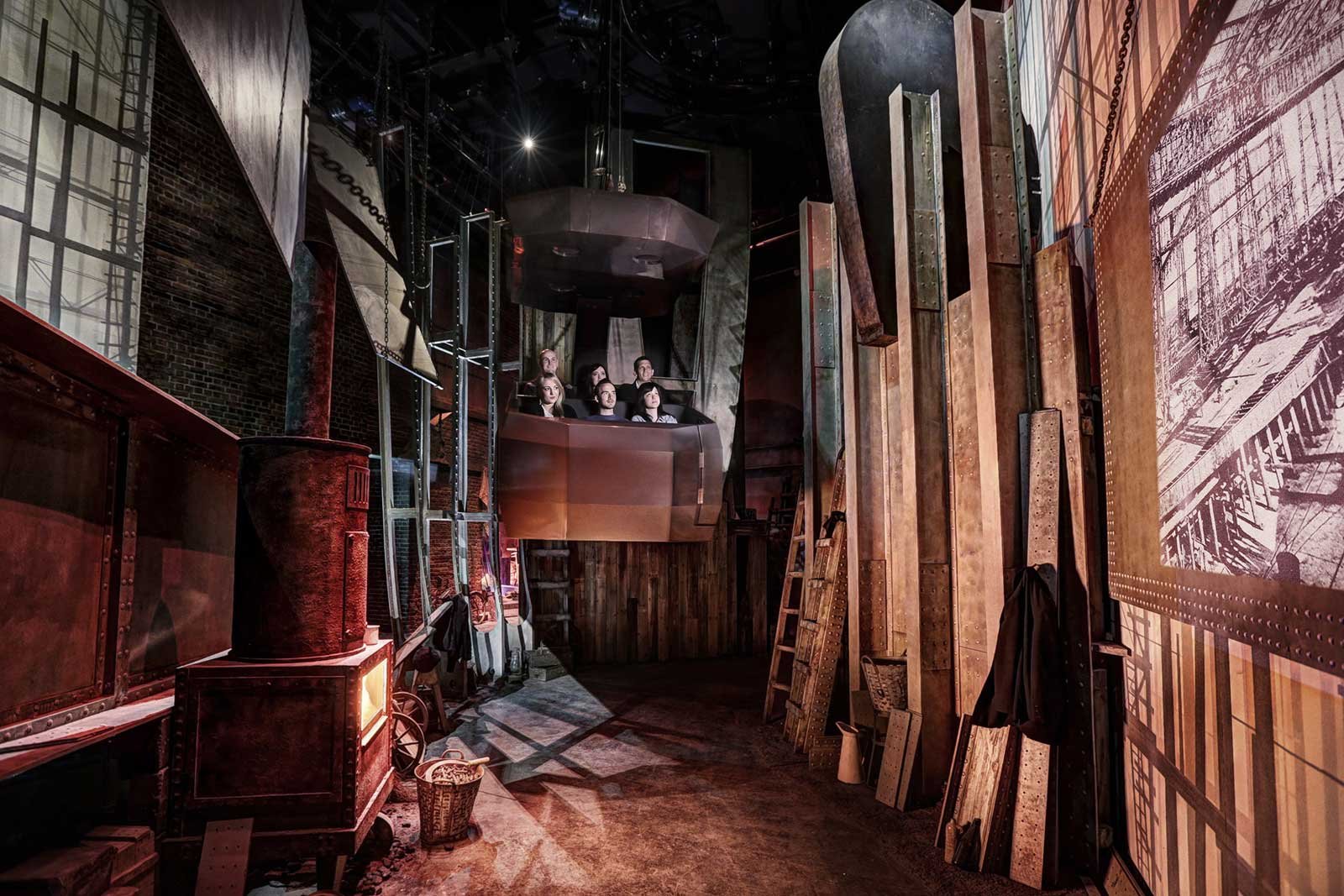
Image credit: Event
The small number of display artefacts drove the design towards something dramatically immersive and digitally interactive. For S.O.S. I envisaged a transition zone, between the Maiden Voyage and The Sinking areas, as being deliberately disorientating, cold and uncomfortable for visitors. In the darkness, sounds of an SOS signal would give way to sounds and images of news headlines about the sinking.
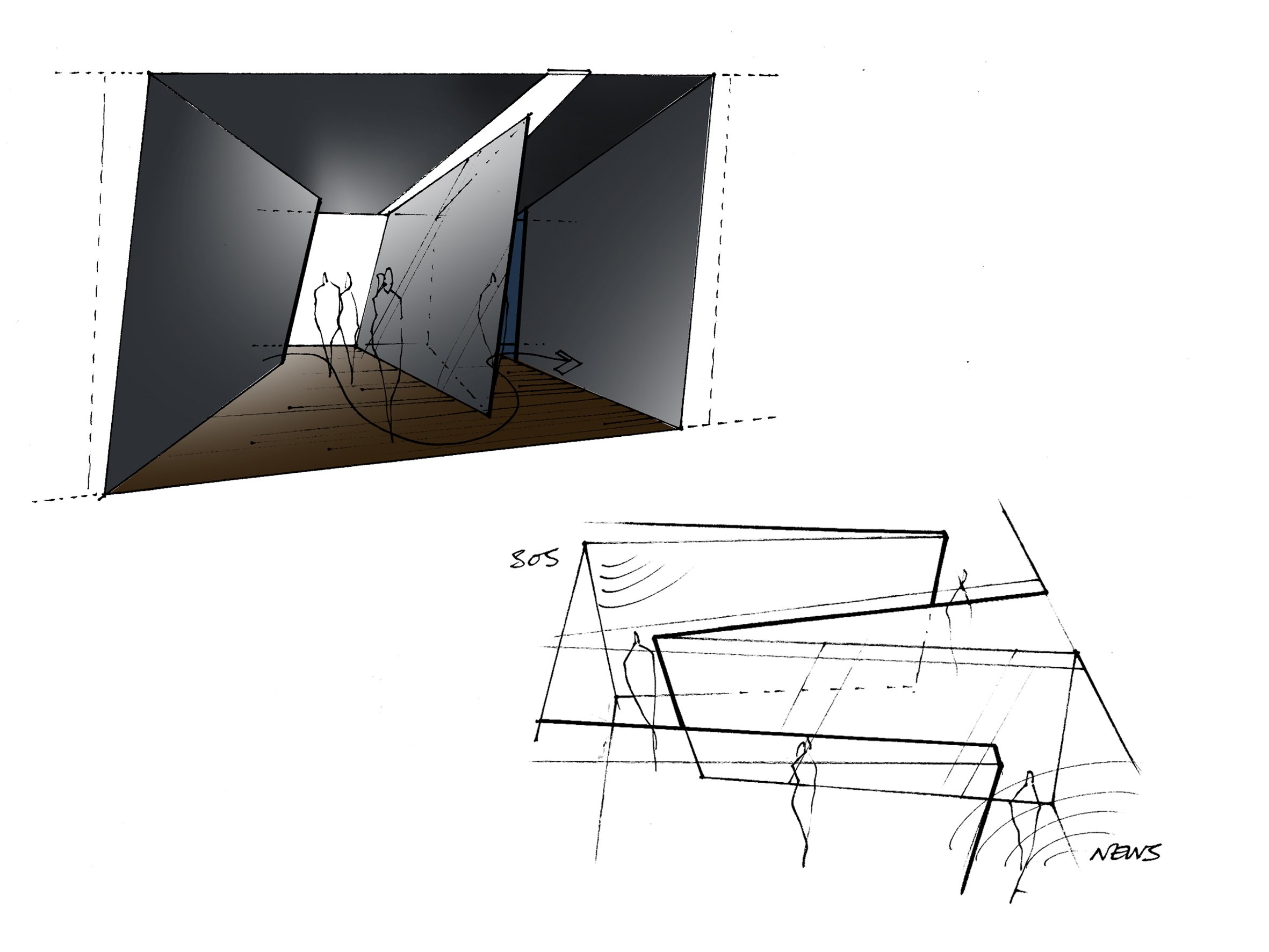
Concept sketch – Transition zone
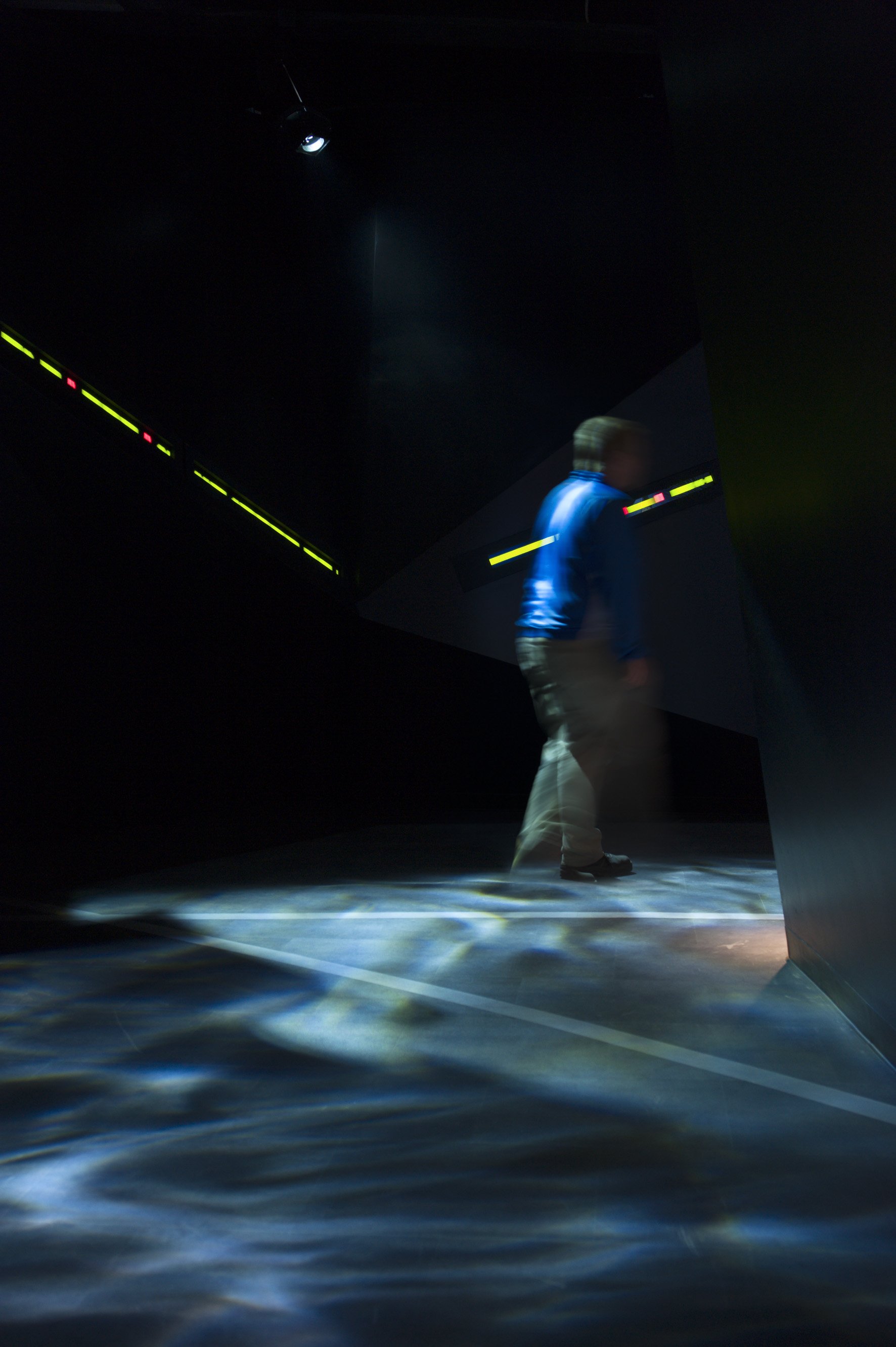
Image credit: Event
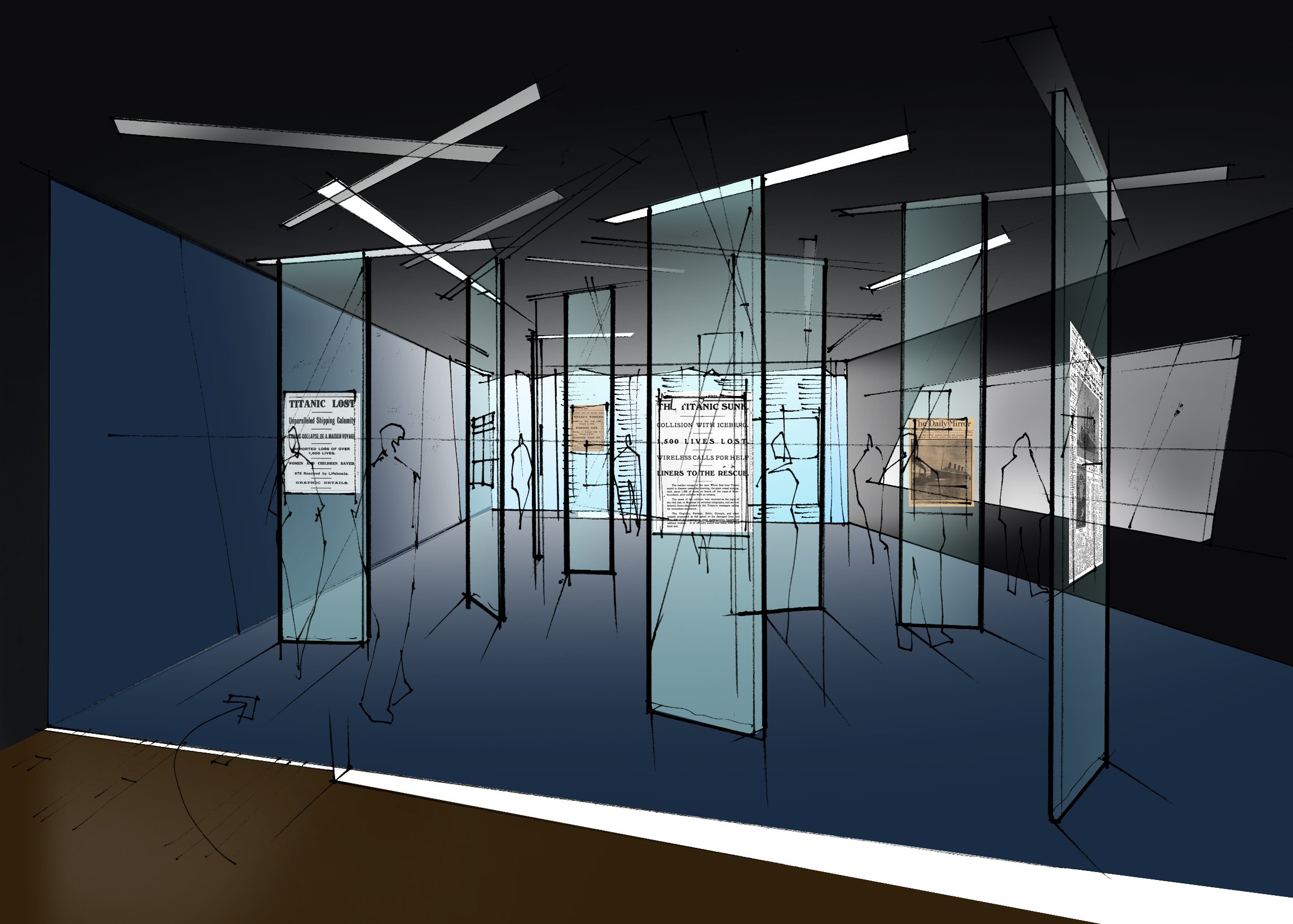
Concept sketch – News of the sinking
For a large theatre space, I proposed a dramatic three-part ‘discover, explore, consider’ experience over multiple levels. Starting with the Titanic’s discovery, footage panning over the wreck from above would come into view under visitor’s feet. A huge screen in front of visitors would then explore around the wreck. Lastly, a series of smaller, more intimate screens would focus on more poignant footage of personal belongings on the seabed. The three-part idea was subsequently amalgamated into a single theatre space.
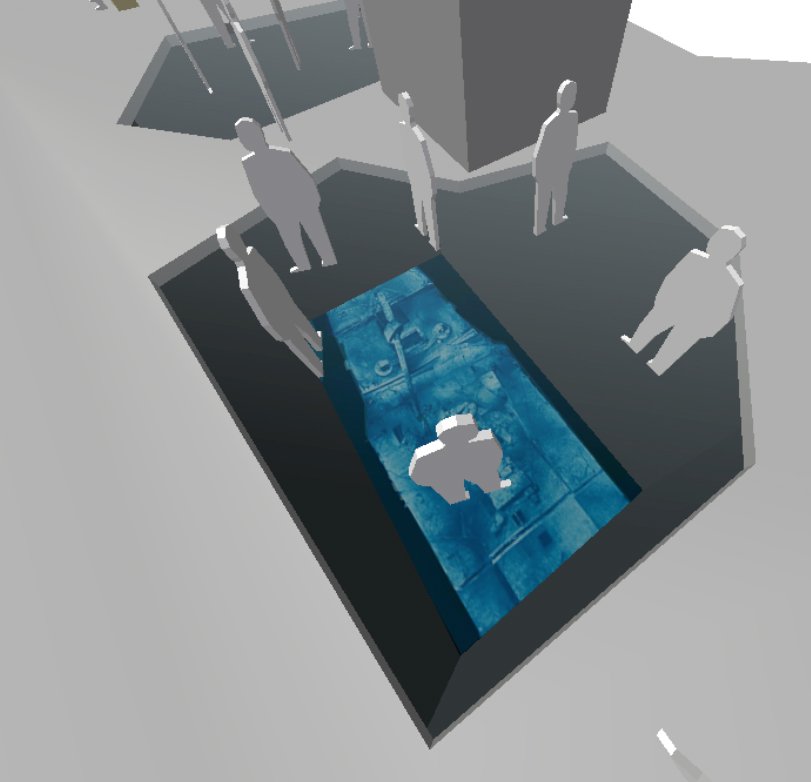
Basic VWX model to test the idea
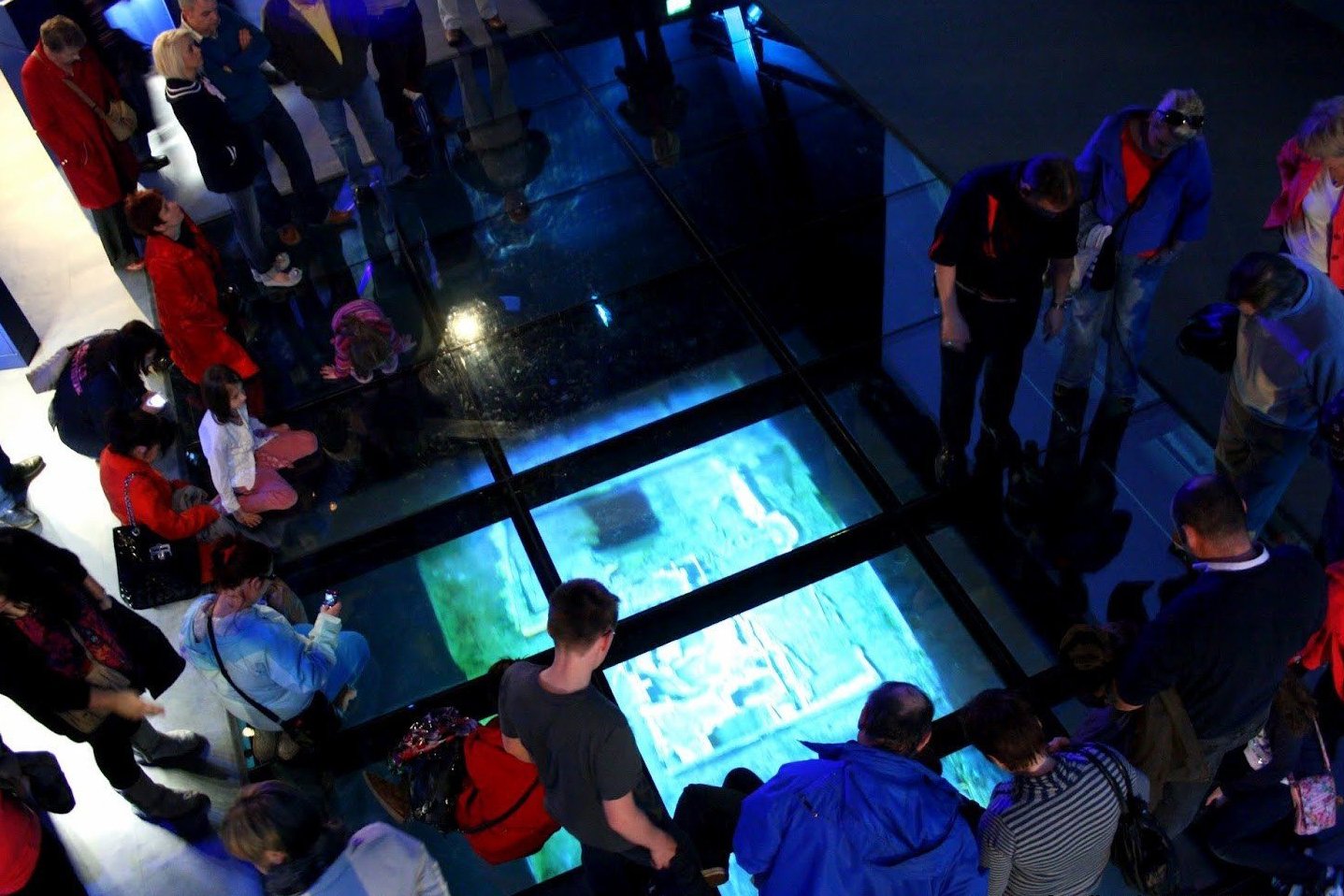
Image credit: The Family Adventure Project

Image credit: Event
In its first year, since opening on 31 March 2012, Titanic Belfast attracted visitors from 128 different countries. Titanic Belfast has won several tourist attraction awards and continues to attract nearly a million visitors a year.